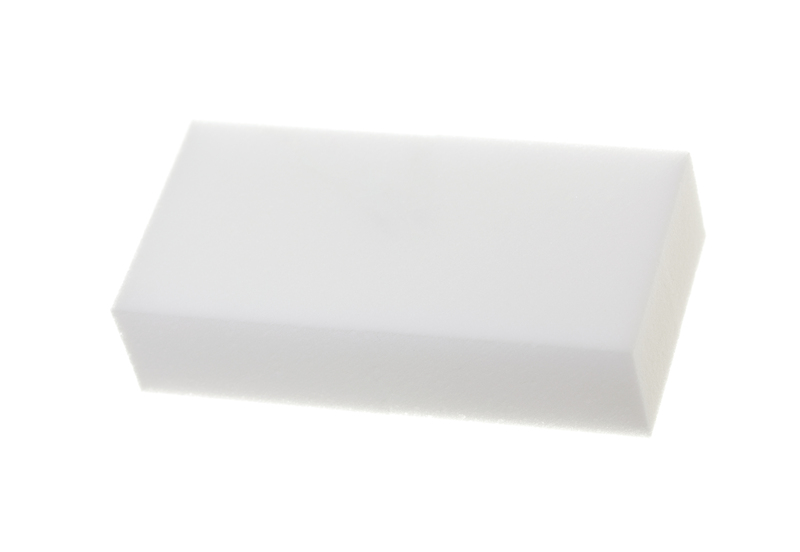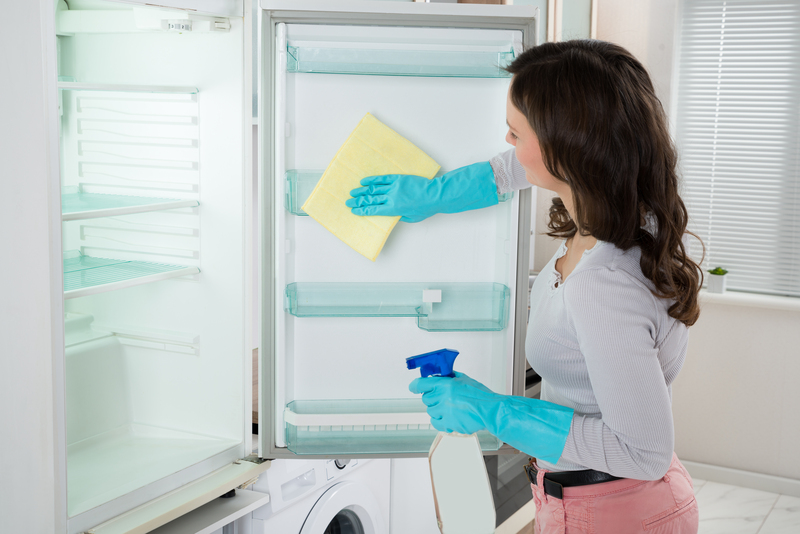Mastering the Art of Cleaning Burnt-on Residue from Your Stovetop
Posted on 11/09/2025
Mastering the Art of Cleaning Burnt-on Residue from Your Stovetop
If you're staring at a stove covered in stubborn, burnt-on mess, you are not alone! Many home cooks face the tough task of cleaning burnt-on residue from their stovetop on a regular basis. Not only is it an eyesore, but it can also affect the performance of your appliance. In this comprehensive guide, we'll cover every step and tip you need to achieve a spotless stovetop--from understanding the types of burnt-on residues to the very best cleaning techniques and preventive care.
Why Burnt-on Residue is a Serious Kitchen Problem
- Irritating to Remove: Burnt food and spills can bond to your stove's surface, making regular wipes ineffective.
- Odor Issues: Uncleaned burnt residue can cause lingering odors each time you cook.
- Damage Risks: Leaving burnt-on mess for too long may stain or even damage your stovetop's finish.
- Reduced Efficiency: A dirty stovetop can impact heat distribution and the effectiveness of your burners.
So, mastering the cleaning process is crucial for both the look and functionality of your kitchen!

Understanding Your Stovetop Surface
Not all stovetops are created equal, and the cleaning method for burnt-on residue often depends on the material:
- Glass and Ceramic: Smooth but prone to scratching. Requires gentle, non-abrasive cleaning agents.
- Stainless Steel: Durable, but can show water spots and scratches easily if not cleaned properly.
- Enamel-Coated: Often found on gas stoves; enamel resists stains but can chip if handled harshly.
- Cast Iron: Extremely hardy but must be dried thoroughly after cleaning to prevent rust.
Always check your stove's manual for manufacturer recommendations before attempting any deep clean on burnt-on stains.
Essential Supplies for Tackling Burnt Stovetop Grime
- Non-abrasive sponge or microfiber cloth
- Plastic scraper or an old credit card
- Baking soda
- White vinegar or lemon juice
- Mild dish soap
- Commercial stovetop cleaner (for extra-tough jobs)
- Soft-bristled brush
- Gloves (for sensitive skin or harsh chemicals)
These basic supplies are your arsenal in the art of cleaning burnt stovetop residue--keep them handy!
Step-by-Step Guide: How to Remove Burnt-on Residue from Your Stovetop
Step 1: Ensure Safety First
- Turn Off: Always make sure your stovetop is off and completely cool before cleaning.
- Remove Grates and Burner Covers: Carefully lift off any removable parts to access the full surface.
Step 2: Pre-Clean Loose Debris
- Wipe Away Crumbs: Use a dry microfiber cloth or paper towel to sweep off any food particles.
- Initial Damp Wipe: Lightly dampen your cloth for a quick pass to remove recent spills.
Step 3: Soften Burnt Residue
Here's where the magic starts:
- Mix a solution: Use equal parts warm water and vinegar (or lemon juice).
- Soak the stains: Liberally apply the solution to burnt spots and let it sit for 10-15 minutes.
- Alternatively: Lay a hot, moist towel over the residue to soften it further.
This preps the burnt-on mess for easier removal--don't skip this step when mastering burnt stovetop cleaning!
Step 4: Apply Baking Soda Paste
- Make a thick paste: Mix baking soda with a small amount of water.
- Apply generously: Smear the paste over all burnt or discolored areas.
- Let it work: Allow it to sit for 15-30 minutes. Baking soda naturally lifts stains without scratching.
Step 5: Gently Scrub--No Scratching!
- Choose the right tool: Use a non-abrasive sponge or a soft brush for gentle but effective scrubbing.
- Use a plastic scraper: For stuck-on residue, angle a plastic scraper to lift the softened gunk off.
- Rinse as you go: Wipe away loosened grime with a fresh, damp microfiber cloth.
Patience is key--repeat the process as needed, especially for heavy build-up.
Step 6: Cleaning Grates and Burner Covers
- Soak in hot, soapy water: Place them in your sink and allow them to soak for at least 15 minutes.
- Scrub with a brush: Use a soft brush or scrubber to work away burnt-on grime.
- Rinse and dry thoroughly: Moisture left on metal can lead to rust--always dry completely!
Step 7: Final Rinse and Shine
- Wipe again: Use a clean, damp cloth to remove any cleaning residue from the stovetop.
- Dry and polish: For shiny surfaces, buff gently with a dry microfiber cloth for extra sparkle.
Special Considerations for Different Stovetop Types
Glass or Ceramic Stovetops
- Never use steel wool or rough abrasive pads.
- Commercial ceramic cleaners are ideal for tougher messes.
- Use a razor blade scraper (held at a 45-degree angle) for carefully removing very stubborn burnt-on residue.
Stainless Steel Stovetops
- Wipe in the direction of the grain to avoid scratches.
- Avoid bleach or chlorine-based cleaners which can cause discoloration.
- Polish with a dab of olive oil for a streak-free shine.
Gas Burners and Grates
- Always dry thoroughly to prevent rust.
- If clogged, clean burner ports with a wooden toothpick, never metal objects.
- Soak heavily soiled burners overnight for best results.
Electric Coil Stovetops
- Unplug before cleaning! Don't submerge coils in water; instead, wipe with a damp cloth.
- Clean drip pans as you would stove grates--soak, scrub, and dry thoroughly.
Natural and Commercial Solutions: Which Works Best?
Many household experts swear by the natural approach--mainly baking soda and vinegar--for tackling burnt-on stove residue. However, there are times when commercial cleaners formulated for stovetops may offer a quicker solution, especially for heavy, baked-on grease or old stains. Always follow safety instructions, ventilate your kitchen, and never mix ammonia-based products with bleach.
Pro Tips for Preventing Burnt-on Messes
- Wipe spills immediately: The quicker you clean, the less likely spills will burn and bond to the surface.
- Use bigger pots and pans: This prevents boil-overs and splatters while cooking.
- Deep clean weekly: Even if you spot clean daily, don't skip a thorough cleaning session once a week to stop buildup.
- Invest in drip trays: These catch spills and can be cleaned separately, protecting your stovetop.
- Cook at moderate temperatures: High heat cooks faster but leads to more burnt-on residue.

Frequently Asked Questions About Cleaning Burnt-on Stove Residue
How Do I Remove Black Burnt Marks from My Glass Stovetop?
Let stubborn burnt marks soak with vinegar and then use a baking soda paste. Gently scrape using a plastic utensil. For major stains, repeat or use a stovetop cleaner specifically for glass.
Can I Use Magic Erasers on My Stovetop?
Magic Erasers are safe on many hard stovetop surfaces, but always test in a small area first, especially with glass or stainless steel.
What's the Best Commercial Cleaner for Tough Burnt Stains?
Brands like Bar Keeper's Friend, Weiman, or Cerama Bryte are well-rated for tough jobs. Read and follow all safety guidelines.
How Often Should I Deep Clean My Stovetop?
Ideally, once per week to prevent burnt-on residue buildup. Wipe after every use to keep things under control.
Conclusion: Unlock a Spotless Kitchen With Burnt Stovetop Mastery
Learning to clean burnt-on residue from your stovetop isn't just about appearances--it keeps your kitchen working efficiently and extends your stove's lifespan. With the right techniques, tools, and a little patience, you can tackle even the most stubborn burnt-on messes. Remember, the best way to avoid future headaches is consistent, proactive cleaning. Stay on top of spills, choose cleaning agents suited to your stove type, and you'll maintain that fresh, welcoming kitchen look all year round.
For those facing severe burnt-on grime, don't hesitate to repeat these steps or seek professional advice. Now, with these best practices in mastering stovetop cleaning, you're fully equipped to face any cooking calamity--and win!








